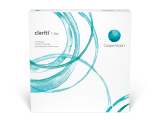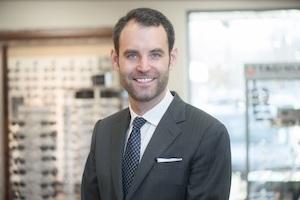
Optometrist Thao Truong knows what a lifetime of unchecked myopia can do.
Before she opened her Forsight Eye Center in Cumming, GA, Dr. Truong worked in a multi-location ophthalmology and surgical center. In her former day-to-day role, Dr. Truong counselled cataract patients with myopia about their increased risk of a retinal detachment during or post-surgery due to their longer axial length and fragility of their retina and vitreous. For younger patients with high myopia, Dr. Truong had to be the bearer of bad news when she deemed them unsuitable candidates for LASIK vision correction surgery.
“I’ve seen every aspect of eyecare, and I’ve seen every aspect of myopia, and I know how it can affect an individual’s life,” Dr. Truong says. “On top of that, I’m a high myope myself, and sadly, I passed the condition to both my girls.”
Dr. Truong’s professional and personal experiences drove her to adopt myopia management as a standard of care at her practice, with the mission to slow progression in children and help ensure they aren’t fated to the same vision issues and ocular complications she’s seen in her adult patients with myopia.
A Flash of Light: When a Myopia Risk Becomes Reality
A posterior vitreous detachment (PVD) generally occurs in older patients.1 While PVDs in individuals under the age of 40 are rare, research has shown that people with high myopia are more inclined to develop a PVD at a significantly younger age.1
Dr. Truong, whose prescription is -8.00 and -9.00, experienced her first PVD when she was just 37 years old, and the incident is still vivid in her memory.
“It was scary. I remember the exact moment when it happened,” Dr. Truong recalls. “I was walking upstairs with my younger daughter who was two at the time. I remember thinking, ‘I’m pretty sure I just saw a flash of light.’”
Her living room was suddenly transformed into an exam room, where her husband, a fellow optometrist, dilated her eyes and checked her retina. Even though he didn’t suspect a retinal detachment, he sent her off to see a retinal specialist, who subsequently confirmed the PVD diagnosis previously made in the family home—thankfully, an uncomplicated PVD.
“I’ve lived with high myopia for my entire life and personally know what it can lead to,” says Dr. Truong.
A Unique Practice Model Dovetails into Myopia Control
When Dr. Truong launched her private practice in her small, close-knit Georgia community 12 years ago, she purposely limited the number of patients she saw each day and continues to do so. This allows for longer visits, which typically include one-hour appointments for new patients and 30-to-45-minute slots for established ones.
“I set my practice up this way so patients would get the kind of care they deserve, and you can really only do that if you spend time with them,” she suggests.
Dr. Truong’s business model is also unique since she doesn’t have a technician and performs all the necessary pretesting and other associated responsibilities herself. “It’s all on me, all the time, and it’s not necessarily conventional, but it allows me to collect and trust all the data collected.”
Back in her former surgical referral center days, Dr. Truong was tasked with “quality control” and analyzed data and surgical outcome trends. A self-described list maker, Dr. Truong carried this habit over to private practice.
“Through the years, I’ve accumulated a huge number of patients who are high myopes, and many have children. Whenever I treat an adult with myopia, I ask if they have children, and if the children wear glasses,” she explains.
Always the data collector, Dr. Truong created a “myopia list,” that included her adult and pediatric patients with the condition. When MiSight® 1 day contact lenses were first available for children aged 8-12 at the initiation of treatment at her practice,* Dr. Truong turned to her detailed list of potential myopia control candidates, and her staff immediately started calling parents.
“Because I’ve been talking to my patients about myopia for so long, the seed was already planted. I’ve also treated many of my patients for years, and in some cases, I take care of four generations within a family, so the trust is already there. Because of all these factors, it was very easy for us to implement myopia management into our practice.”
As a high myope herself, Dr. Truong admits she was worried about her daughters’ vision, which was at the crux of her decision to pursue this specialty. In fact, one of Dr. Truong’s first MiSight® 1 day fits was her 11-year-old daughter, whose prescription is -3.00.
“My high myope adult patients also have friends and siblings with high myopia, so I’ve acquired all of them and their kids. They know that I stay on top of the latest research and treatments because of my girls, and their attitude is, ‘If treating myopia is the right thing to do for your girls, let’s do it.’”
Speaking from Experience During the Consult
In the exam room, Dr. Truong will don her “mom hat” and explain why myopia is important to her as a parent. She’ll share relatable points, such as extended periods of near work’s impact on a child’s vision and ocular health, in addition to the importance of outdoor time, and how myopia can limit refractive surgery options down the road. With her keen interest in data, Dr. Truong will also share pertinent research findings, including the results of MiSight® 1 day’s 7-year study, that found MiSight® 1 day* provided myopia control for nearly all age-appropriate children.2†
Dr. Truong, who only offers MiSight® 1 day as a myopia treatment option, prices her fees on the low end to make the treatment and associated care more accessible for families, she says. “Seeing the world as I do as a high myope, I don’t want price to be a barrier to treatment.”
Once she presents the information, including fees, most parents, and especially those with myopia, say yes to treatment immediately, while emmetropic parents often choose to consult with their myopic spouses first, she explains. Even emmetropes and those parents with low levels of myopia are motivated to pursue treatment if their child’s prescription has been changing rapidly, she adds.
Reaping the Rewards of Slowed Progression at the 6-Month Mark
Dr. Truong, who started prescribing MiSight® 1 day in February, is once again collecting a new round of data based on recent 6-month follow-up appointments, and the results are extremely promising, with either limited or no progression detected between visits. Just this past week in Jan/Feb 2023, she was 7 for 7 in age-appropriate patients showing no myopia progression in the past 6 months.‡3
The positive results have been a cause for celebration for 11-year-old Alice and her family. Dr. Truong has treated Alice for myopia since she was 7, and prior to MiSight® 1 day, Alice’s prescription continued to change at each visit. However, at her recent 6-month myopia control follow-up visit, Alice showed no signs of progression for the very first time.
“Alice’s mom is a high myope. She is very conscientious and always worries Alice’s vision is going to be like hers one day. The mom was super excited there was no progression,” Dr. Truong adds.
A Chance of Preserved Vision for a New Generation
Until recently, Dr. Truong informed her young patients with myopia that their changing prescription was just part of the “growing up” process. Now that many of these former children are in their mid-twenties, Dr. Truong is setting the foundation that myopia isn’t something the next generation has to passively accept. “I tell these patients that when they have kids, we have treatments now to slow myopia progression, and their children’s vision isn’t destined to be like their own.”
-------------------------------
*Indications for Use: MiSight® (omafilcon A) daily wear single use Soft Contact Lenses are indicated for the correction of myopic ametropia and for slowing the progression of myopia in children with non-diseased eyes, who at the initiation of treatment are 8-12 years of age and have a refraction of -0.75 to -4.00 diopters (spherical equivalent) with ≤ 0.75 diopters of astigmatism. The lens is to be discarded after each removal.
† 90% of myopic eyes respond to MiSight® 1 day treatment; ages 11-15 at start of wear, n=90.
‡0.25D or less of change.
1. Hayashi K, Manabe SI, Hirata A, et al. Posterior Vitreous Detachment in Highly Myopic Patients. Invest Ophthalmol Vis Sci2020 Apr; 61(4): 33.
2. Chamberlain P, Arumugam B, et al. Myopia Progression on Cessation of Dual-Focus Contact Lens Wear: MiSight 1 day 7-Year Findings. Optom Vis Sci 2021;98.
3. Chamberlain P, Arumugam B, Jones D et al. Myopia Progression in Children wearing Dual-Focus Contact Lenses: 6-year findings. Optom Vis Sci 2020;97(E-abstract): 200038.








